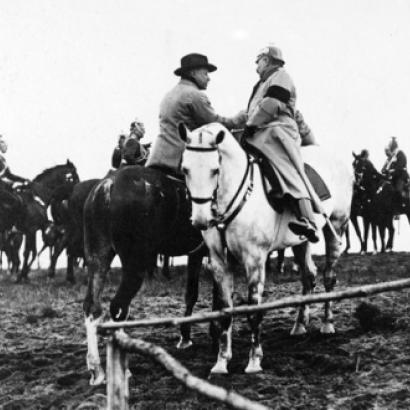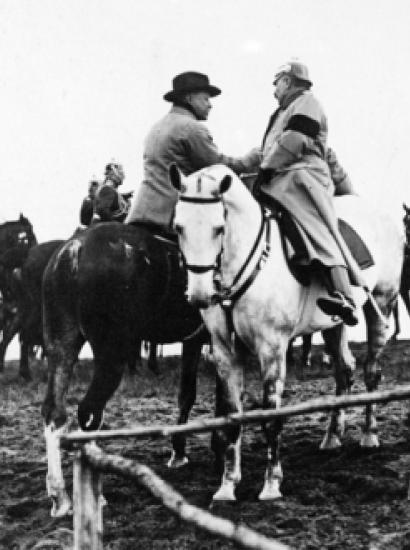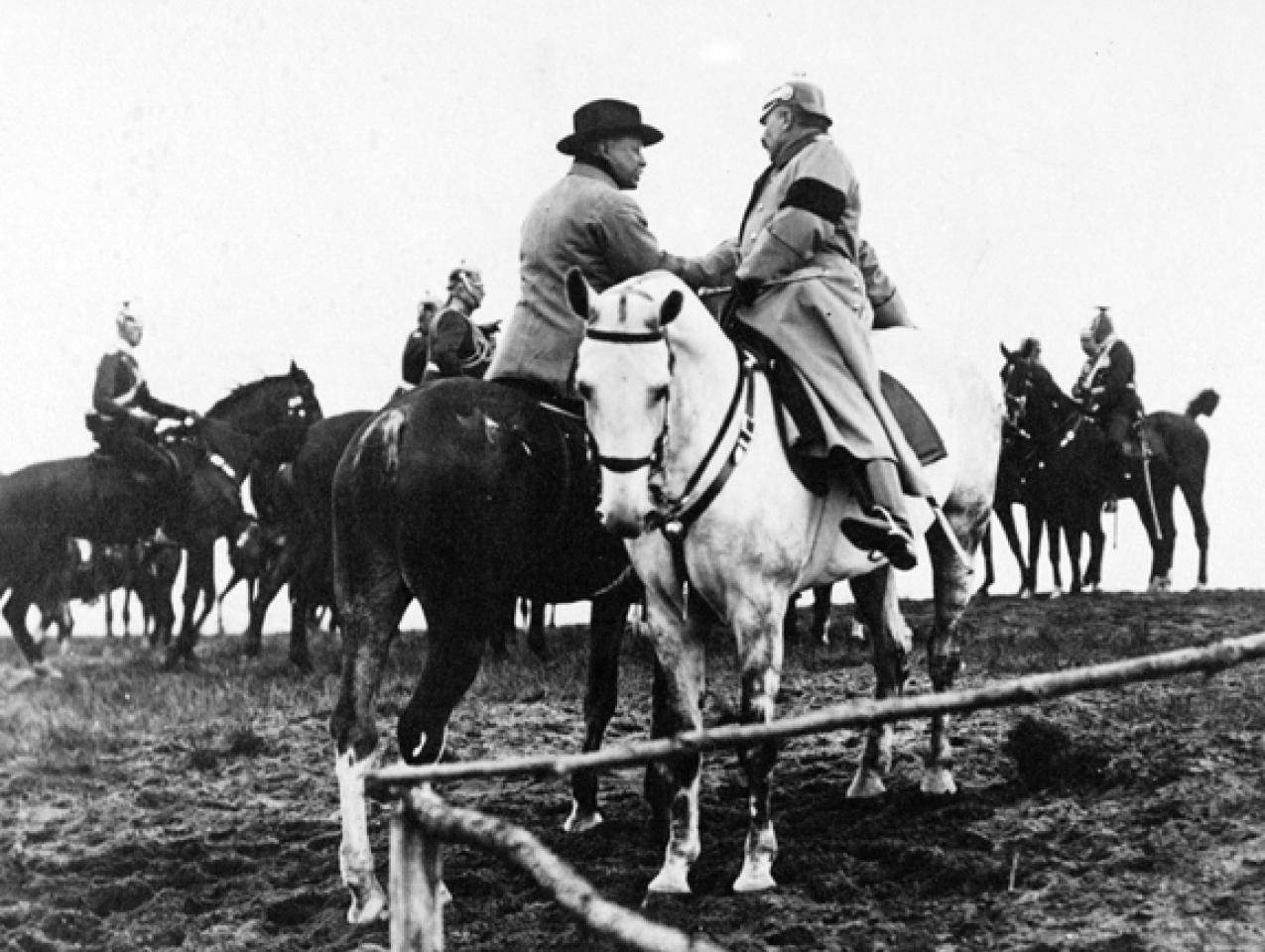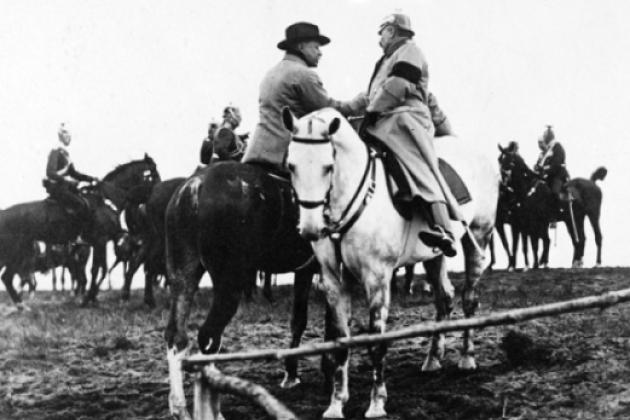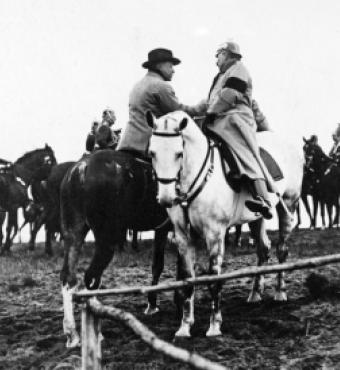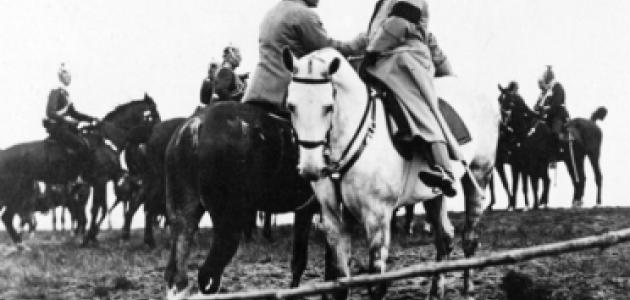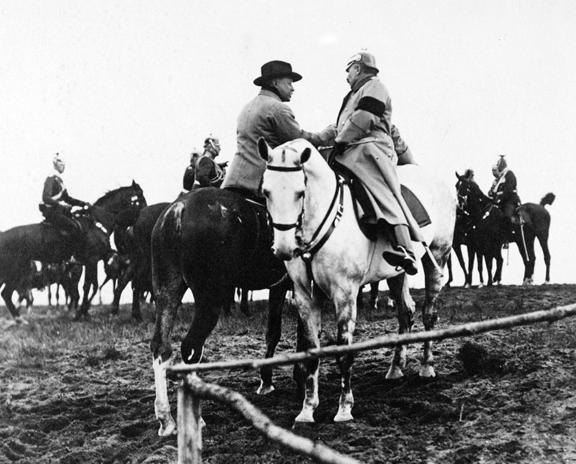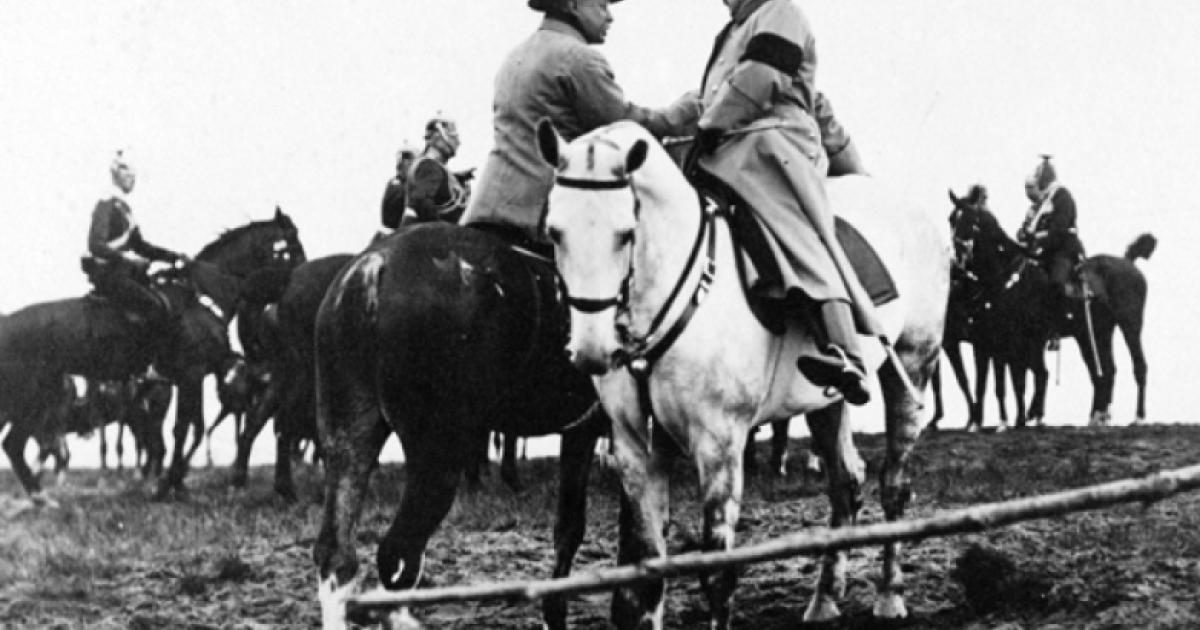- International Affairs
- World
- Military
- Contemporary
- US Foreign Policy
- Campaigns & Elections
- The Presidency
- History
- Politics, Institutions, and Public Opinion
The announcement that the 2009 Nobel Peace Prize had been awarded to President Obama caught almost everyone by surprise, and in some corners aroused great consternation. How had the new leader earned such an honor? Was it meant to recognize what he had done, what he stood for, or what he was expected to accomplish in the future? This debate was only to be expected; history shows that the prize meant to honor the world’s peacemakers has caused its own share of strife. Arguments about who deserves the most prestigious Nobel began when the medal was first bestowed in 1901, and the two previous sitting U.S. presidents to have won the award—Theodore Roosevelt and Woodrow Wilson—also were leaders who pondered how to make peace while projecting American power abroad. Another significant American honoree, activist Jane Addams, instead strove tirelessly to stay the hand of military might. Where will history place Obama on the peacemaking spectrum?
The divisiveness of the prize is due to the inventor and armaments manufacturer in whose name the award is given. Alfred Nobel’s will was vague in defining the contours of his Peace Prize, directing that it be given to those (he envisioned multiple winners) who during the preceding year “shall have conferred the greatest benefit on mankind” and that part of the award be given to the person who “shall have done the most or the best work for fraternity between nations, for the abolition or reduction of standing armies, and for the holding and promotion of peace congresses.” His instructions left room for a wide variety of potential candidates, as well as for myriad political calculations behind the selection of a winner.
Conflicts over the award revive every autumn, building up to December 10, the day the Peace Prize is awarded in Oslo. The collections of the Hoover Institution offer valuable insights into Alfred Nobel and the men and women who have been honored with the prizes given in his name in the six areas—peace, literature, physics, chemistry, medicine, and economics. Several Nobel laureates have deposited their papers in the Archives; many more have left their traces in the collections of others—in the form of letters, writings, and photographs. Hoover is especially strong in its coverage of the surging peace movement at the beginning of the twentieth century, beneath the lengthening shadow of war.
Theodore Roosevelt: DIPLOMAT WITH A BIG STICK
Theodore Roosevelt, U.S. president from 1901 to 1909, was awarded the Nobel Peace Prize in 1906. In September 1905 he had brokered a peace between Russia and Japan in the Treaty of Portsmouth. Roosevelt’s Nobel Prize was occasioned by that widely praised act of diplomacy, but it was also meant to honor his considerable record as a champion of international law.
In 1902, President Roosevelt had taken the initiative to activate the Permanent Court of Arbitration at The Hague. The court, founded in 1899 at the first Hague Conference, had remained dormant during the first three years of its existence. Under Roosevelt, the United States agreed to place before the Hague Tribunal, as it was popularly known, an old dispute between the United States and Mexico concerning the ownership of the Pious Funds of California, donations that had been used by the Jesuits and then the Franciscans and the Dominicans to finance the Spanish missionary movement in California. Those funds had been seized for the Mexican treasury by General Santa Anna, president of Mexico, in 1842.
Roosevelt’s example was soon followed by other statesmen, and the arbitration machinery created in 1899 gained traction. Roosevelt also concluded several arbitration treaties between the United States and the European powers, although the Senate refused to ratify them. He was also the most influential advocate for convening the second Hague Conference, which met in 1907—although Roosevelt allowed Czar Nicholas II to take the credit for convoking that landmark diplomatic gathering.
So Teddy Roosevelt, better remembered by later generations of Americans as a unilateralist Rough Rider, had strong internationalist credentials. Even so, the peace activists of the day reacted to the news of his Nobel Prize with mortification. Baroness Bertha von Suttner, the mother of the international peace movement and winner of the Nobel Peace Prize in 1905, could not believe that the American president who had negotiated an end to the Russo-Japanese war was truly interested in peace. In her eyes, Roosevelt was an imperialist bully. She said she refused to read anything he wrote because she never could sleep afterward: “It makes my blood run cold.”
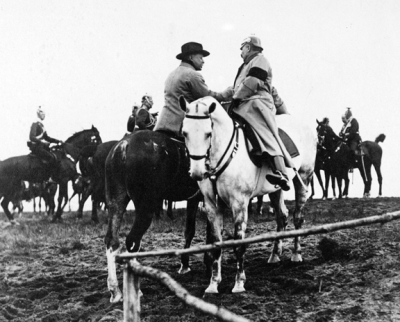
The Viennese pacifist Alfred Fried, editor of the peace movement’s leading journal, Die Friedenswarte (The Peace Watch), and a future winner of the Peace Prize (in 1911), was especially upset because the Nobel Committee had explicitly tied Roosevelt’s prize to his successful mediation between Russia and Japan. The Russo-Japanese war would have ended without Roosevelt’s help, Fried argued, perhaps after a few more weeks of fighting. Fried gave Roosevelt credit for “christening” the Permanent Court of Arbitration and for inspiring the second Hague Conference. But Fried maintained that Alfred Nobel had intended his Peace Prize to honor the works of private citizens, not government officials. (The same argument would be heard in 1912, when the prize was awarded to Roosevelt’s former secretary of state, Elihu Root.)
Fried also felt that the Nobel committee’s recognition of Roosevelt’s role in negotiating the Treaty of Portsmouth betrayed a fundamental misunderstanding of the pacifist credo, which placed law above power. Through its decision, Fried lamented, the Nobel committee had effectively endorsed the idea that “might makes right” and exalted what he considered the outmoded and repugnant concept of Si vis pacem, para bellum (If you want peace, prepare for war). Fried’s papers at the Hoover Institution include a complete run of the monthly Die Friedenswarte, from 1891 through the First World War, as well as his extraordinary wartime diary.
Roosevelt asked the American minister in Norway to accept the honor in his name and deliver his acceptance speech on December 10, 1906. After he left the White House in 1909, Roosevelt went on safari in Africa and then toured Europe, stopping in Oslo to deliver his postponed Nobel Lecture on May 5, 1910. In his speech, he warned of the dangers of rising militarism in Europe; to meet the threat he advocated using international arbitration treaties, strengthening the Hague Tribunal, and convening a third Hague conference. More ambitiously, he called for the foundation of a world court and for the nations of the world to establish a “League of Peace, not only to keep the peace among themselves, but to prevent, by force if necessary, its being broken by others.”
Roosevelt could sound like a proponent of what today we call Wilsonian internationalism. Yet, as he reminded his audience during his Nobel Lecture, his advocacy of international law and organizations did not mean he was a pacifist: “Peace is generally good in itself, but it is never the highest good unless it comes as the handmaid of righteousness; and it becomes a very evil thing if it serves merely as a mask for cowardice and sloth, or as an instrument to further the ends of despotism or anarchy.”
After he delivered his Nobel Lecture, Roosevelt was the guest of Kaiser Wilhelm II in Germany. There he found his audience less receptive to warnings about the growing dangers of arms races and militarism. He told the kaiser that a war between Britain and Germany would be an “unspeakable calamity.” Wilhelm, whom Roosevelt found to be “vain as a peacock,” brushed him off. They spent several hours on horseback reviewing a military exercise on the field of Döberitz.
JANE ADDAMS: Pacifism and the GREAT War
Jane Addams, the American pioneer social worker, feminist, and international peace worker, was a Nobel Peace Prize winner (1931) of a distinctly different type. Her road to peace advocacy began with her social work. In 1889, together with Ellen Gates Starr, she founded Hull House in Chicago, the social settlement that greatly influenced the city’s civic affairs and came to symbolize the reform spirit of the Progressive Era. Its meeting rooms, work rooms, and dining rooms served the community in a variety of ways, providing such facilities as a day nursery, a library, a gymnasium, a community kitchen, an art studio, and a cooperative boardinghouse for working women.
In the first two decades of the twentieth century, Addams was a leading advocate of women’s suffrage, never more visibly than when she seconded the nomination of Theodore Roosevelt at the 1912 convention of the Progressive (Bull Moose) Party, becoming the first woman to give a nominating speech at a major party convention. The outbreak of the world war drew Addams actively into the peace movement. In January 1915 she was elected chairwoman of the newly formed Woman’s Peace Party. Several months later, she attended the International Congress of Women at The Hague, and as the elected president of that body she led an unsuccessful effort to organize a conference of neutral nations to mediate a truce among the warring countries.
Addams’s pacifism incensed Roosevelt, who had seen the face of German militarism up close. He called the women’s peace movement a “shrieking sisterhood” and Addams “poor bleeding Jane” and a “Bull Mouse.” Women such as Addams, Roosevelt said, advocate peace oblivious to the “infamies worse than death which their sisters in France and Belgium have suffered.”
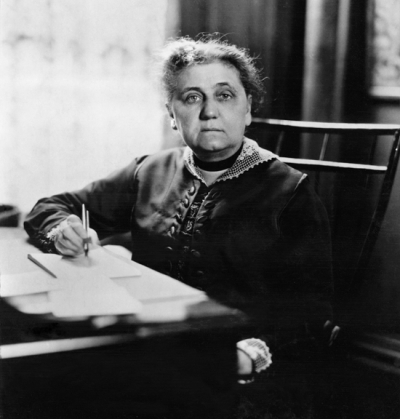
Yet when she received her award more than a decade later, Addams was praised for exemplifying “the work which women can do for peace and fraternity among nations.” Halvdan Koht, the Nobel committee member presenting the award to her, said, “Fortunately we have seen something of this feminine will which revolts against war.”
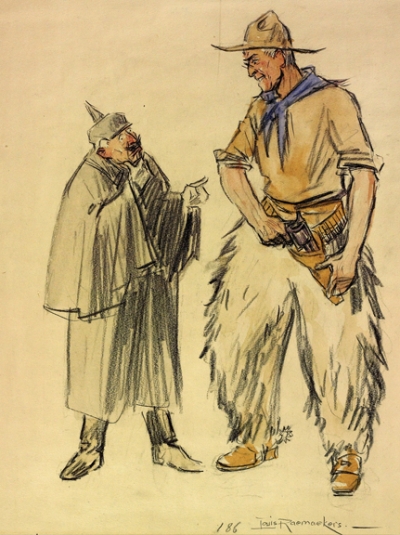
WOODROW WILSON: ISOLATIONISM PUT TO THE TEST
As Roosevelt banged the drum of military preparedness, he also excoriated Woodrow Wilson, to whom he had lost the 1912 presidential election, for his vow to keep America out of the war. In a speech titled “The Meaning of Americanism,” delivered on May 10, 1915, President Wilson declared: “The example of America must be a special example. The example of America must be the example not merely of peace because it will not fight, but of peace because peace is the healing and elevating influence of the world and strife is not. There is such a thing as a man being too proud to fight. There is such a thing as a nation being so right that it does not need to convince others by force that it is right.”
Roosevelt accused Wilson of embodying a “cult of cowardice.” Wilson’s message, however, reflected the country’s isolationist mood. In the words of Roosevelt biographer Kathleen Dalton, “TR’s invective was so personal and out of tune with public opinion in 1915 that even his most loyal supporters pressed him to moderate his diatribes.” Roosevelt’s proposal to raise a division of mounted riflemen to go fight the Germans was greeted with amused disdain in Washington.
One week after what became known as Wilson’s “Too Proud to Fight” speech, a German U-boat torpedoed the British ocean liner Lusitania. From that moment, American public opinion slowly began to shift from antiwar to anti-German. By the time the United States entered the war in April 1917, Roosevelt and his countrymen were very much in tune on the need for America to wield a “big stick” against German militarism. Wilson, meanwhile, portrayed the struggle as a “war to end all wars” and a “war to make the world safe for democracy.”
In the war’s aftermath, President Wilson became the third American to win the Nobel Peace Prize (the award was for 1919 but was announced only in 1920). Wilson was honored not for having stood up to the kaiser—as Roosevelt had goaded him to do, and as Addams had urged him not to do—but for his Fourteen Points program, which served as the basis for the Paris peace talks, and for incorporating the Covenant of the League of Nations into the Treaty of Versailles.








